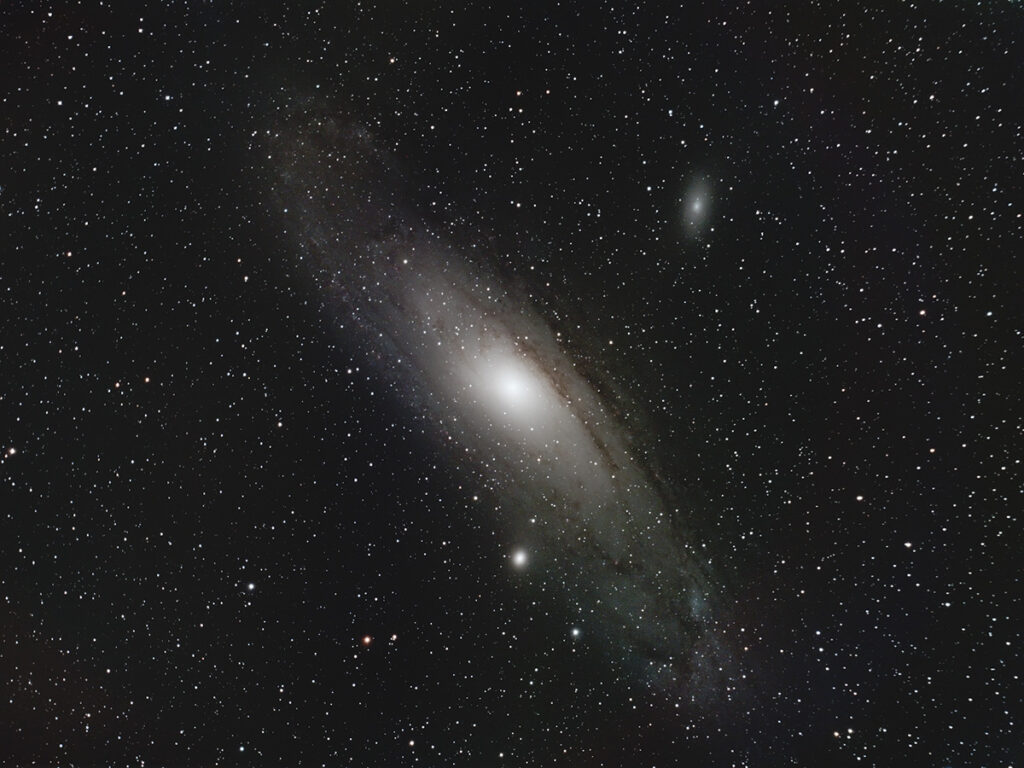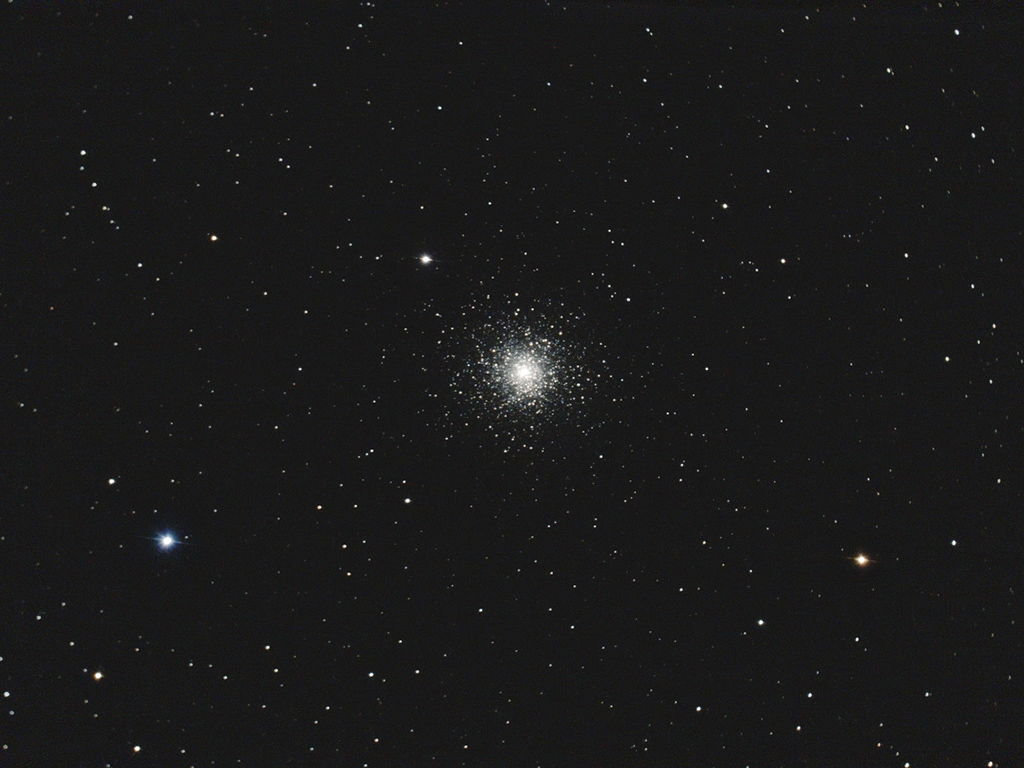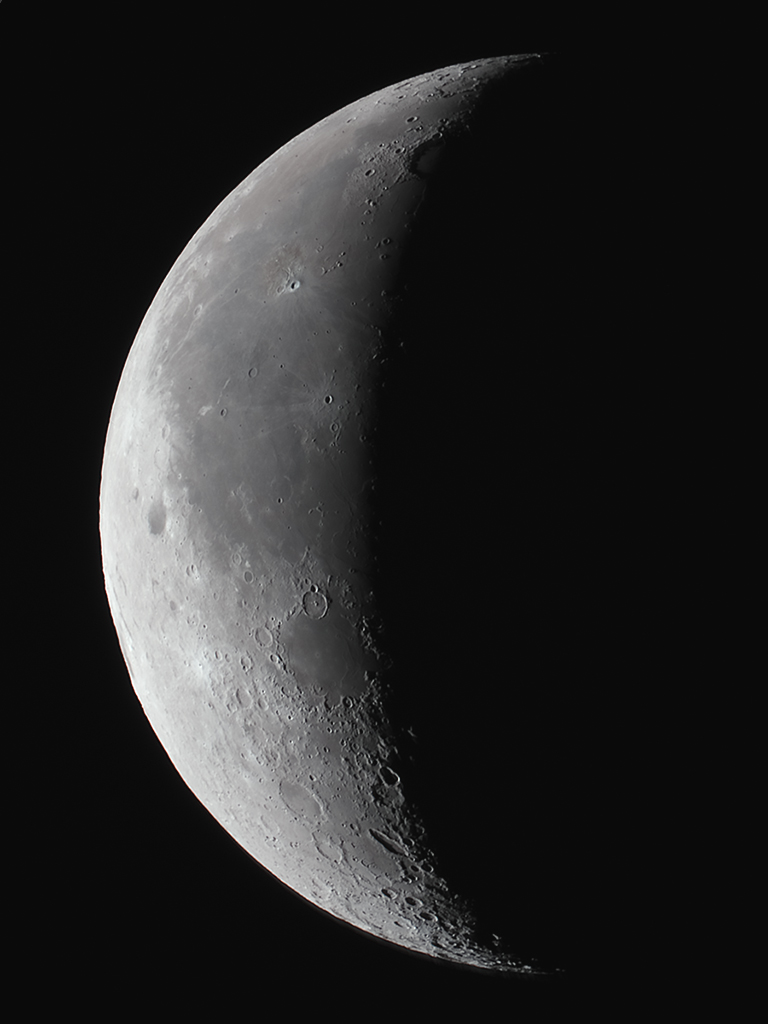
Telescope: ES DHL Comet Hunter MN6 at f/4.8, Orion Atlas EQ-G
Camera: Baader modified Nikon D610
Filter: Orion Imaging Skyglow Filter
Guide scope: Williams Optics 50mm, ASI290MM mini, PHD
Exposure: (100 + 84)x120sec, ISO 400, saved as RAW
Darks: Internal (Long Exposure Noise Reduction On)
Flats: 32×3sec, LED Tracing Tablet covered with 3 layers of muslin
Average Light Pollution: Red zone, poor transparency
Lensed Sky Quality Meter: 18.4 mag/arc-sec^2
Stacking: Mean with a 1-sigma clip.
White Balance: Nebulosity Automatic
Software: Backyard Nikon, Nebulosity, Deep Sky Stacker, Photoshop
M31 is an iconic spiral in the constellation of Andromeda. Under dark skies it is easily visible to the naked eye and from urban skies it is an easy object for binoculars and small telescopes. At a distance of some 2 million light years, it is the farthest object visible to the naked eye. M31 also has several satellite galaxies, two of which are visible here. M32 is about as bright as the core of M31 and is located at the bottom center of this field. To the upper right is the much fainter M110. It is easy to be disappointed with the visual appearance of M31 since it is often shown in highly processed images such as the one I give here. However, the true appearance is quite beautiful in its own way. The core is relatively bright and almost stellar, surrounded by a soft luminous glow that I always think of as pearl.
I have always found that imaging the M31 group from my backyard and the associated processing to be surprisingly challenging due to its large size and the faint outer arms that tend to fade into my sky-glow. For this image I combined source images taken over two consecutive evenings. Unfortunately, the transparency on both evenings were relatively poor, but I’m happy with the result. This also does a good job showing the wide, flat field of the MN6 when used with a full frame camera.
M31 is currently well place high in the east at sunset.


Recent Comments